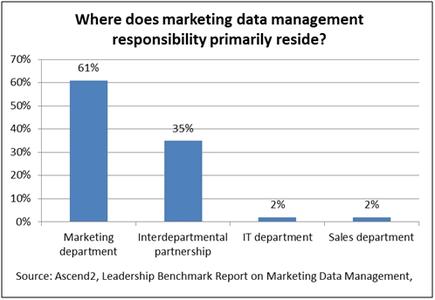New institute heralds rise of customer data platforms for marketers
- 01 November, 2016 09:05

A new institute has launched in the US aimed at helping marketers better understand and manage the new swathe of customer data platforms offerings coming into the market.
The Customer Data Platform Institute is focused on providing resources around customer data platforms (CDPs), an emerging category of martech designed to improve the way marketing teams manage and unite customer data sets. The institute has been launched by founder and principal of Raab & Associates, David Raab, who introduced the concept of CDPs in 2013.
CDPs are described as marketer-managed systems that create a persistent, unified customer database accessible to other systems. The objective behind them is to provide a single customer view through data that can be used for all manner of marketing and customer engagements. They are positioned as an alternative to other data management products such as data management platforms (DMPs), traditional data enterprise warehouses and channel applications, such as email engines.
What specifically distinguishes CDPs from DMPs, another rapidly growing category of tech, is the emphasis on owned data assets. DMPs were originally created to store anonymised Web browser cookies for advertising networks, and have more recently expanded to include personal identifier information.
In contrast, CDPs are targeted specifically for marketing uses based around first-party data including personal identifiers, and to interact with all company systems. Vendors playing in this space and supporting the new institute include Signal, Ensighten, Lytics, RedPoint Global, ActionIQ, AgilOne, Ascent360, BlueConic, BlueVenn, mParticle, Segment and Treasure Data.
CDPs debuted on Gartner’s HypeCycle for Digital Marketing and Advertising in July, but awareness remains low. Raab claimed the institute had identified more than 20 vendors that fit the definition, but that education was needed in order for marketers to understand their role.
“The institute will educate marketers about CDP capabilities and to help them take full advantage of these powerful new systems,” he said.
In a recent interview with CMO, martech commentator, Scott Brinker, highlighted CDPs as one of two approaches to the challenge marketers face uniting customer data sets for a 360-degree view. What made CDPs different to existing martech stacks is that they provide a federated layer underpinning all platforms, which can pull data from, then push data out, to all specialised systems, he said.
Raab claimed the need for CDPs is clear. He noted a recent LiveRamp survey, which found 90 per cent of marketers consider an omnichannel customer view important for marketing effectiveess, yet only 20 per cent claims to have such a view. In addition, an Experian study in April found technology issues to be one of the biggest barriers to developing a unified customer view.
CDPs remove many of these technical obstacles by using modern methods such as schema-less data store, machine learning and cloud-based deployment to unite data, Raab said.
"Marketers’ demand for a unified customer view has grown because there are so many new channels and systems interacting with customers, who themselves are demanding consistent, intelligent treatment, however they interact with a company," Raab told CMO. "The supply side is that new technologies like cloud-based systems and schema-less data stores make CDPs easier to create, so the project becomes small enough for marketers to tackle it on their own without corporate IT getting involved and in the way.
"It has also become increasingly clear that enterprise marketing clouds won’t deliver a single, internally integrated system for everything, so marketers recognise they are better off with a CDP that can work with other system rather than favoring integration with its fellow suite-members.
"Finally, the growing presence of 'marketing technologists' at large and mid-size companies means marketing departments are comfortable choosing CDP vendors and supervising CDP operations, so they don’t need help from IT. This matters because IT tends to like company-wide solutions, which is exactly what CDPs are not."
Too many large enterprise organisations with massive customer bases lack the ability to integrate data across a growing array of engagement screens and marketing SaaS tools, added mParticle CMO, David Spitz.
“The CDPI is a much-needed resource for accelerating adoption of new technologies these businesses can employ to improve the customer experience across every stage of the customer journey," he said.

Follow CMO on Twitter: @CMOAustralia, take part in the CMO conversation on LinkedIn: CMO ANZ, join us on Facebook: https://www.facebook.com/CMOAustralia, or check us out on Google+:google.com/+CmoAu

